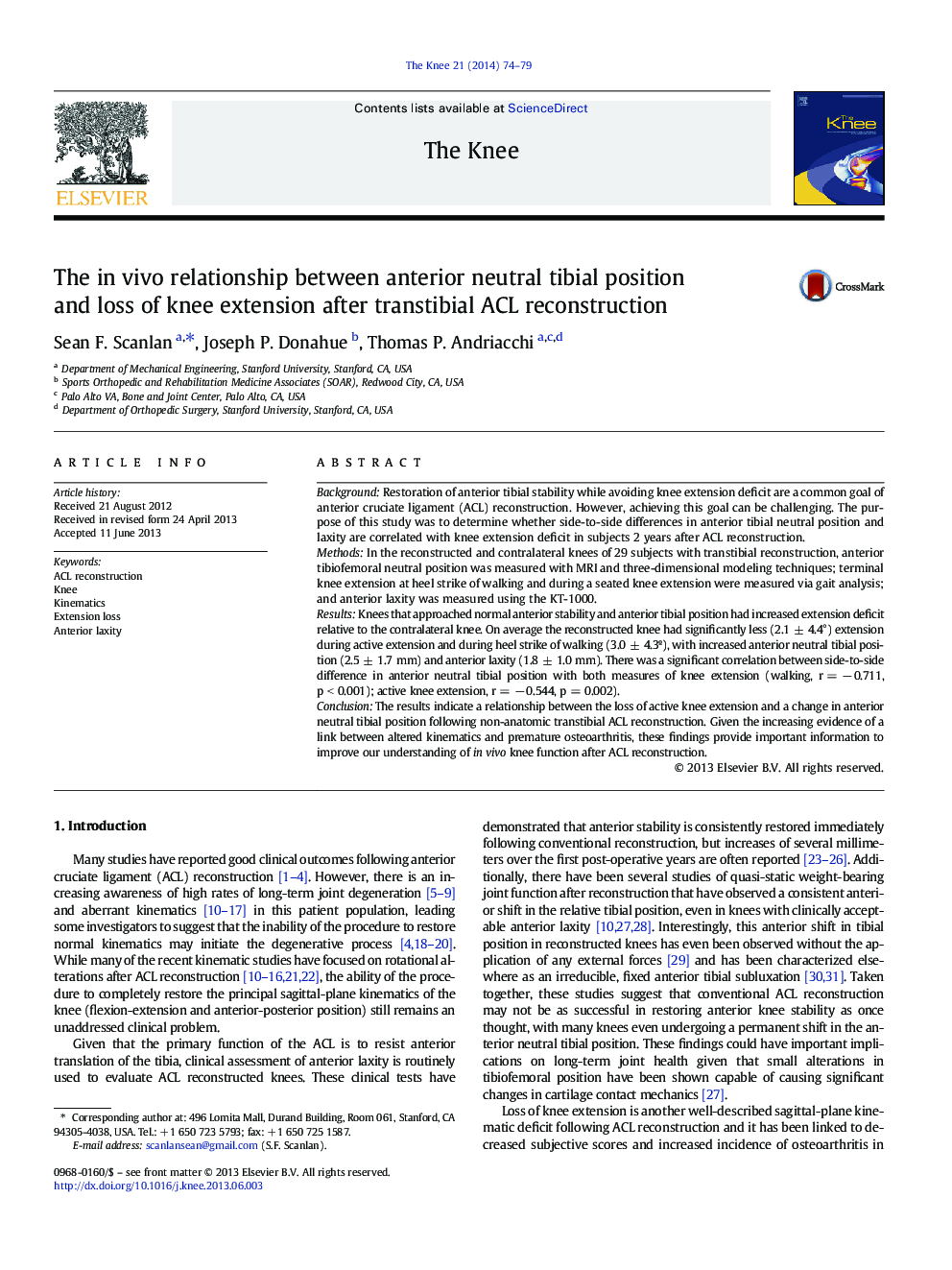| Article ID | Journal | Published Year | Pages | File Type |
|---|---|---|---|---|
| 6211217 | The Knee | 2014 | 6 Pages |
BackgroundRestoration of anterior tibial stability while avoiding knee extension deficit are a common goal of anterior cruciate ligament (ACL) reconstruction. However, achieving this goal can be challenging. The purpose of this study was to determine whether side-to-side differences in anterior tibial neutral position and laxity are correlated with knee extension deficit in subjects 2 years after ACL reconstruction.MethodsIn the reconstructed and contralateral knees of 29 subjects with transtibial reconstruction, anterior tibiofemoral neutral position was measured with MRI and three-dimensional modeling techniques; terminal knee extension at heel strike of walking and during a seated knee extension were measured via gait analysis; and anterior laxity was measured using the KT-1000.ResultsKnees that approached normal anterior stability and anterior tibial position had increased extension deficit relative to the contralateral knee. On average the reconstructed knee had significantly less (2.1 ± 4.4°) extension during active extension and during heel strike of walking (3.0 ± 4.3º), with increased anterior neutral tibial position (2.5 ± 1.7 mm) and anterior laxity (1.8 ± 1.0 mm). There was a significant correlation between side-to-side difference in anterior neutral tibial position with both measures of knee extension (walking, r = â 0.711, p < 0.001); active knee extension, r = â 0.544, p = 0.002).ConclusionThe results indicate a relationship between the loss of active knee extension and a change in anterior neutral tibial position following non-anatomic transtibial ACL reconstruction. Given the increasing evidence of a link between altered kinematics and premature osteoarthritis, these findings provide important information to improve our understanding of in vivo knee function after ACL reconstruction.
